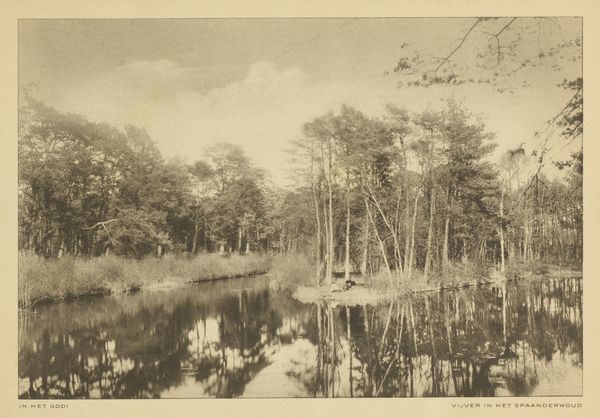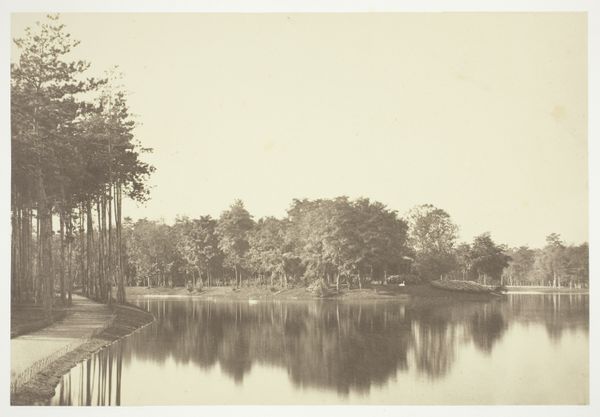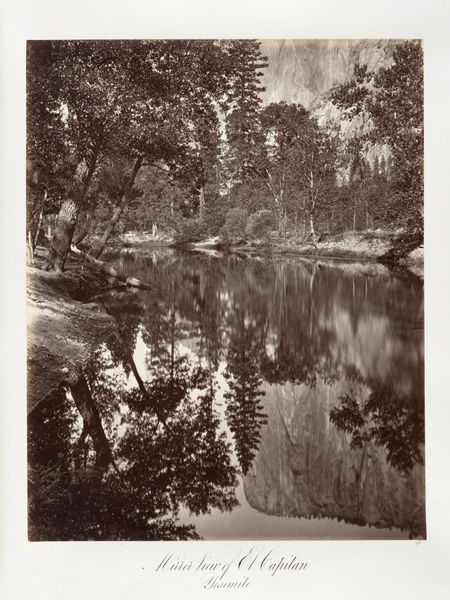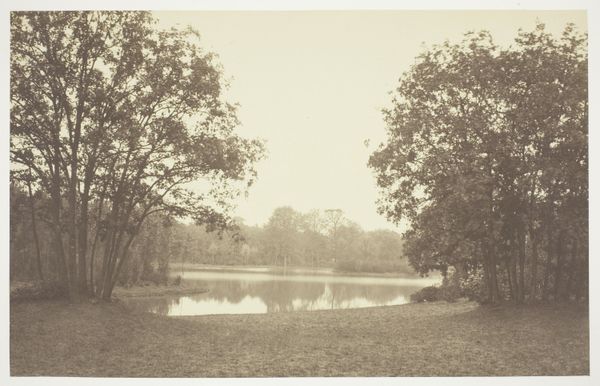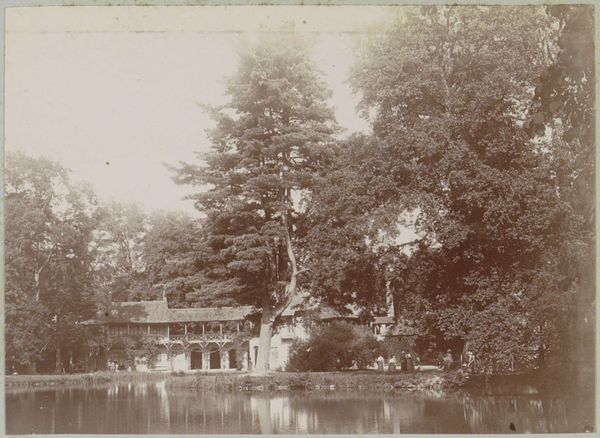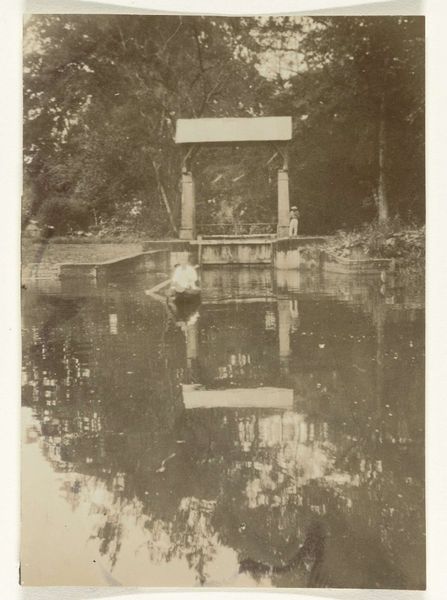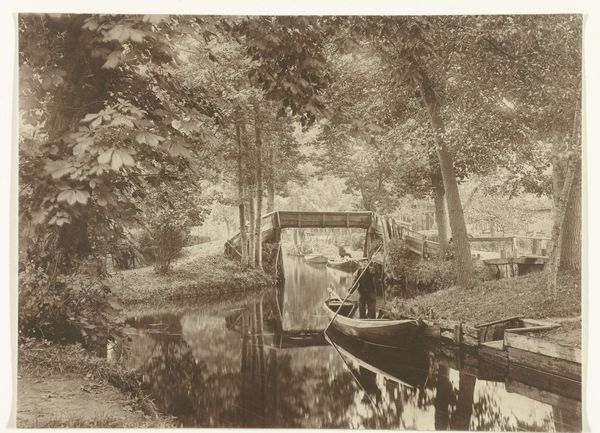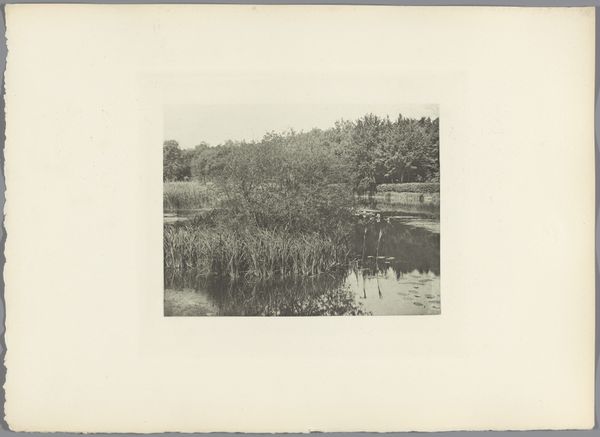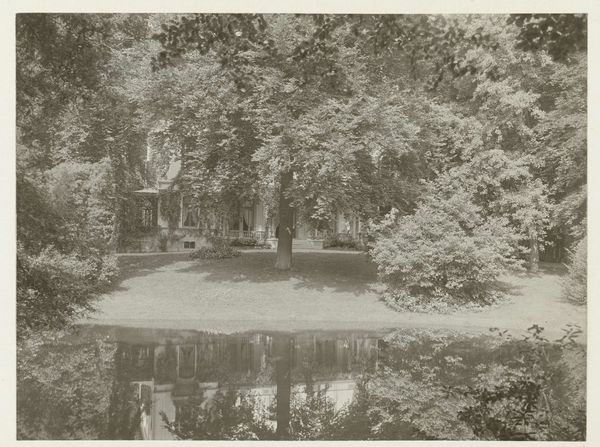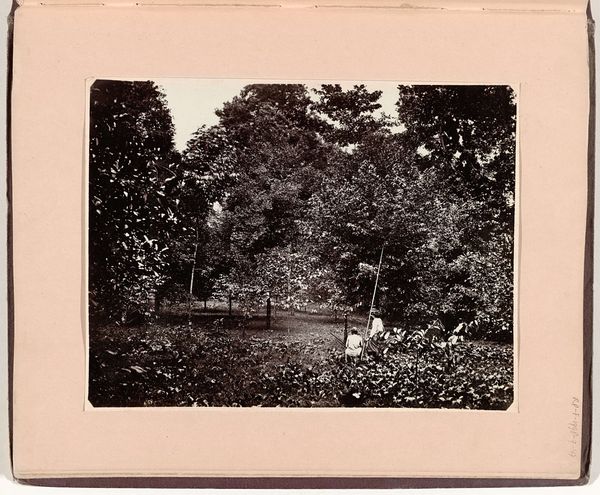
Dimensions: height 141 mm, width 98 mm, height 166 mm, width 107 mm
Copyright: Rijks Museum: Open Domain
Editor: This gelatin-silver print, titled "Watervallen bij het landgoed De Oorsprong bij Oosterbeek," was created sometime between 1860 and 1880 by J.S.J. de Jongh. I'm immediately drawn to the way the light interacts with the water, especially how the reflections create almost a mirrored world. How do you see the artist using light and shadow to structure the composition? Curator: It is an intriguing piece, isn't it? Notice how the composition relies heavily on the interplay between light and shadow, not just in the water but throughout the landscape. The darker foliage in the upper reaches provides a strong contrast to the bright, reflective surfaces of the water. This sharp division helps to define the spatial arrangement. Can you see how this division, almost bisecting the image, adds to the formal structure? Editor: I think I see what you mean. The contrast separates the active, reflective water from the calmer, more solid-looking land. Does that contribute to the overall effect? Curator: Precisely. The use of photographic techniques available at the time – notice the sharp details versus areas intentionally out of focus - helps direct the viewer’s eye. We are compelled to compare textures and forms, deepening the structural reading of the piece. Consider, too, how the framing enhances the geometry of the scene. How does that linearity strike you? Editor: The lines formed by the waterfalls and the structures around them really pop. It almost feels like a carefully designed stage set rather than just a natural landscape. It really emphasizes a constructed nature. I didn't see it that way at first! Curator: Yes, precisely. It presents a curated view of nature, mediated by photographic processes, and deliberate arrangement of forms. Through acute visual analysis, the photograph moves from a landscape image to a meditation on structural and geometric harmonies. It underscores how formalism can reshape our perceptions. Editor: I will certainly look at photography, and all art, with fresh eyes now! Thanks so much!
Comments
No comments
Be the first to comment and join the conversation on the ultimate creative platform.
